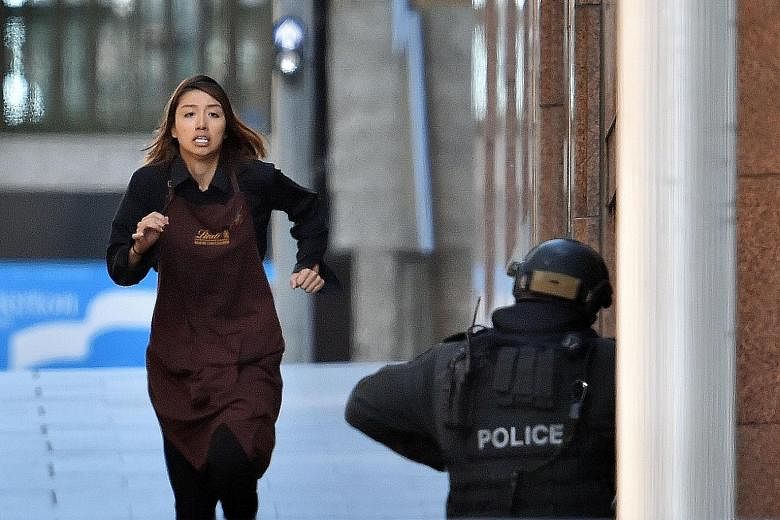Australian Prime Minister Malcolm Turnbull has signalled that he may change counter-terrorism rules to make it easier for the military to respond to attacks, following a coroner's report into a deadly siege in Sydney in 2014.
The 472-page report, released yesterday after a two-year inquiry into the siege, uncovered a series of failures by the authorities and is set to change the way security forces handle terrorism acts.
But the report made it clear that the gunman - Man Haron Monis - was solely to blame for the tragedy and the loss of two innocent lives.
The long-awaited report criticised the police for waiting "too long" before storming the cafe and called for a review of the procedures for when the military - rather than the police - respond to terrorist acts.
The siege ended only after more than 16 hours, leaving two hostages and the gunman dead.
"The challenge global terrorism poses for state police forces calls into question the adequacy of existing arrangements for the transfer of responsibility for terrorist incidents to the Australian Defence Force," the report said.
The families of the two victims - cafe manager Tori Johnson, 34, and barrister Katrina Dawson, 38 - have criticised the police, saying they should not have waited for a hostage to be shot before storming the cafe.
-
Troubled life
-
October 1996: Man Haron Monis arrives in Sydney from Iran.
October 2004: Monis deemed not to be security risk and granted citizenship.
November 2013: Monis charged as accessory to murder of ex-wife. December 2013: Monis released on bail.
October 2014: Monis charged with more than 40 sex assault offences.
Dec 12, 2014: Monis loses court appeal over an earlier conviction.
Dec 15, 2014 8.33am: Monis enters Lindt cafe in Sydney with shotgun and eats cake before starting siege.
Dec 16, 2014 2.14am: Police storm cafe after Monis shoots a hostage. Monis and a second hostage are killed.
May 2015: Coronial inquest begins.
November 2016: Monis' partner found guilty of killing his ex-wife in 2013 at his behest.
May 24, 2016: Inquest findings handed down, noting failures by the authorities but blaming the deaths solely on Monis.
"We were confronted with systematic failures of various authorities who were at times confused, ill-informed, unprepared and under-resourced to deal with Monis," said Mr Thomas Zinn, the partner of Mr Johnson.
Ms Dawson's brother, Mr Angus Dawson, told ABC News on Monday: "The idea that we had to wait for somebody to be killed or seriously injured before the police would act was staggering."
Responding to the findings, Mr Turnbull told Parliament that "we must be more agile than those who seek to do us harm".
"The Government will consider the recommendations carefully and continue to strengthen arrangements where needed," he said.
The Australian military has never been called out to respond to a terrorist act. The 114-year-old law governing such call-outs states that the military should be involved only if a state requests it or is unable to adequately respond to the threat.
In the case of the siege, which involved a lone gunman, the police deemed defence involvement unnecessary - a finding the coroner accepted.
The siege, which occurred on a busy weekday morning at Martin Place, in the heart of Sydney, brought the city and the nation to a standstill.
It left lingering questions about whether the police could have launched a pre-emptive strike and why Monis was out on bail despite facing charges for assisting with the murder of his former wife.
A 50-year-old, self-styled sheikh, he was well known to the authorities for his history of extremism.
The report found that the police in New South Wales had underestimated the threat posed by Monis and recommended that they reconsider their "contain and negotiate" strategy for handling terrorism incidents.
Police snipers occupied three positions around the cafe but did not shoot at Monis as they did not think he posed an immediate threat to the 18 hostages.
"That was, in my opinion… an underestimation of the risk the hostages faced," said the report by state coroner Michael Barnes.
But he said shooting at Monis could have risked hostages' lives.
Monis was eventually killed during the police raid at 2.14am on Dec 16, 2014, 10 minutes after he first shot at hostages and a minute after he killed Mr Johnson. Ms Dawson, a mother of three, died after being hit by ricocheting bullets.
"The 10 minutes that lapsed without decisive action by police was too long," the report said.
New South Wales Police Commissioner Mick Fuller said yesterday that the police would be more willing to conduct raids earlier in future, and would review the use of the "contain and negotiate" strategy during terrorism incidents.
Mr Barnes acknowledged police failings, including a failure by negotiators to explore a compromise with Monis. The police also failed to take four phone calls by some of the hostages.
The coroner criticised state prosecutors for not opposing bail for Monis, who was freed from jail despite facing more than 40 sex assault and murder accessory charges.
But he concluded: "Even if every aspect of the response adopted had been executed to the highest possible standard, there is no certainty the outcome would have been any better - that more of the hostages would have left the cafe alive."

